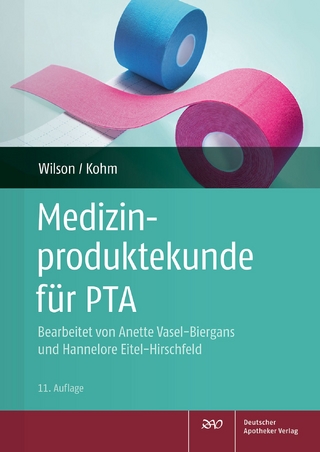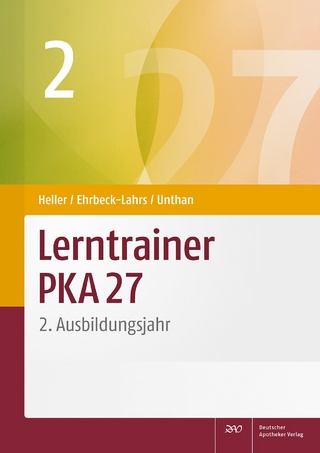Antianginal Drugs
Springer-Verlag Berlin and Heidelberg GmbH & Co. K
978-3-540-05365-1 (ISBN)
Lese- und Medienproben
- Titel ist leider vergriffen;
keine Neuauflage - Artikel merken
If the numerous therapeutic acquisitions of the past few years have enriched very different fields of human pathology, it does seem that coronary pathology has been given very special attention, as witness the wide variety of antianginal medications placed at the disposal of the medical profession. There are various explanations for this state of affairs, one of them probably being that the medica- tions successively proposed do not fully satisfy the practitioner and another that the total number of individuals suffering from the clinicaI manifestations of coronary heart disease offers, by its size, a vast profit potential for the pharma- ceuticaI industry. This field of applications opens up such prospects that it has encouraged a prolific amount of competition between various research laborato- ries, and it is no exaggeration to say that every major firm has its individuaI anti- anginaI drug in its therapeutic cataIogue.
A further factor has aIso contributed enormously to this proliferation of medi- cinal preparations intended for the treatment of angina pectoris: this is the rapid advance in our knowIedge of the physiopathoIogy of angina, which in turn has produced originaI concepts of pharmacological and biochemical research. As a result, there have emerged new substances whose action mechanisms have claimed to be best suited to the cardiovascular disorders responsible for cardiac pain.
Coronary Atherosclerosis: General Considerations.- Epidemiology of Coronary Atherosclerosis.- Clinical Manifestations of Coronary Atherosclerosis.- General Therapeutic Measures in Angina Pectoris.- Physical Training in Angina Pectoris.- Treatment of Determining Factors of Atherosclerosis - of Formed Anatomical Lesions: Surgery.- - of Predisposing Factors.- a) Hypercholesterolaemia and Hypertriglyceridaemia.- b) High Blood Pressure.- c) Metabolic Diseases.- d) Tobacco.- - of the Anginal Syndrome.- I. Pathophysiology of Angina Pectoris.- 1. Pathophysiology of the Anginal Attack.- Imbalance Between Myocardial Oxygen Consumption and Coronary Blood Flow.- Lactate Production.- Myocardial Electrolyte Balance.- Robinson's Index.- 2. Cardiac Dynamics during the Anginal Attack.- 3. Part Played by Hypersympathicotony in the Anginal Attack.- 4. Trends in Pharmacological Research for the Development of Antianginal Medications.- 4.1. Coronary Vaso-Dilation.- 4.2. Reduction in Cardiac Work.- 4.3. Inhibition of Monoamineoxydase.- 4.4. Blockade of Hypersympathicotony.- 4.5. Blockade of the Adrenergic ?-Receptors.- 4.6. Overall Inhibition of Hypersympathicotony.- 4.7. Dilatation of the Coronary Conductance Vessels.- 4.8. Improvement of Functional Coronary Microcirculation.- 4.9. Development of a Collateral Coronary Circulation.- 4.10. Potentiation of the Endogenous Mediators of the Coronary Autoregulation.- 4.11. Prophylaxis of Myocardial Necrosis.- 4.12. Inhibition of Platelet Aggregation or Adhesiveness.- II. Haemodynamic Basis for Coronary Pharmacology.- General Considerations.- Blood Pressure.- Myocardial Oxygen Consumption.- Cardiac Work.- Cardiac Output.- Heart Rate.- Regulation of Coronary Circulation.- Hypoxaemia.- Vasomotor Metabolites.- CO2.- Lactic Acid.- pH.- Histamine.- Potassium.- Adenosine.- "Sympathine".- Bradykinine.- Hyperemine.- III. Pharmacological Methodology for Testing Antianginal Drugs.- Coronary Blood Flow.- Isolated Heart.- Heart in situ.- 1. Measurement of Coronary Outflow.- 1.1. Morawitz Technique.- 1.2. Heart-Lung Preparation.- 1.3. Rodbard Technique.- 1.4. Busch Technique.- 1.5. Catheterization of the Coronary Sinus without Thoracotomy.- 2. Measurement of Coronary Inflow.- 2.1. Techniques with Extra-Arterial Cannulation.- 2.1.1. Melville Technique.- 2.1.2. Schofield Technique.- 2.2. Techniques with Intra-Arterial Cannulation.- 2.2.1. Gregg Technique.- 2.2.2. Pieper Technique.- 2.2.3. Berne Technique.- 2.3. Techniques without Arterial Cannulation.- 2.3.1. Direct Methods.- 2.3.1.1. The Thermostromuhr.- 2.3.1.2. The Calorimetric Method.- 2.3.1.3. Method Using the Electromagnetic Flow Transducer.- 2.3.1.4. Method Using the Ultrasonic Flowmeter.- 2.3.2. Indirect Methods.- 2.3.2.1. The Nitrous Oxide Technique.- 2.3.2.2. Methods Based on the Employment of Radioactive Substances.- 2.3.2.2.1. Non-diffusible Substances.- 2.3.2.2.2. Diffusible Substances.- 2.3.2.2.3. Diffusible Inert Gases.- 3. Nutritional Myocardial Micro-Circulation.- 4. Collateral Coronary Circulation.- 4.1. Acute Experiment.- 4.1.1. Linder Technique.- 4.1.2. Rees Technique.- 4.1.3. McGregor Technique.- 4.2. Chronic Experiment.- 4.2.1. Meesmann Technique.- 4.2.2. Schmidt Technique.- 4.2.3. Schaper Technique.- 5. Experimental Chronic Coronary Insufficiency.- Measuring Cardiac Output.- Measuring Cardiac Work.- Measuring Myocardial Oxygen Consumption.- IV. Clinical Methods for Assessment of the Therapeutic Value of Antianginal Medications.- Diagnosis of Angina Pectoris.- Clinical Assessment of Antianginal Drugs.- 1. Objective Methods.- 1.1. Russek Method.- 1.2. Levy Method.- 1.3. Riseman Method.- 1.4. Solvay Method.- 1.5. Rookmaker Method.- 1.6. Frick Method.- 2. Subjective Methods.- Greiner Method.- 3. Conclusions on Methods of Clinical Assessment.- V. Pharmacological and Clinical Features of Antianginal Drugs.- Nitrites.- 1. Nitroglycerin.- - Effect on Coronary Flow in Dogs.- - Effect on Coronary Flow in Humans.- - Haemodynamic Effects in Humans.- - Haemodynamic Effects in the Case of the Angina Patient Suffering an Attack.- - Mechanisms of the Antianginal Effect.- - Therapeutic Effect of Nitroglycerin.- - Special Galenic Preparations.- 2. Triethanolamine Trinitrate.- 3. Erythrityl Tetranitrate.- 4. Pentaerythritol Tetranitrate.- 5. Mannitol Hexanitrate.- 6. Amyl Nitrite.- 7. Octyl Nitrite.- 8. Sodium Nitrite.- 9. Isosorbide Dinitrate.- 10. Nilatil.- 11. Etrynit.- 12. Propanediol Dinitrates.- Papaverine.- Xanthines.- 1. Aminophylline.- 2. Choline Theophyllinate.- 3. Various Theophylline Derivatives.- Khellin.- Carduben.- Diacromone.- Phenyl-chromone.- Recordil.- Monoamineoxydase Inhibitors (Maoi).- Irrigor.- Segontin.- Amplivix.- Isoptin.- Persantine.- Intensaine.- Ustimon.- Ildamen.- Clinium.- ?-Adrenergic Blocking Drugs.- 1. Inderal.- - Primary Cardiac Effect.- - Effect on Coronary Flow.- - Effect on Cardiac Output.- - Antianginal Effect.- - Mechanisms of the Antianginal Effect.- - Effect on the Cardiac function.- - Recommendations for the Treatment of Angina Pectoris.- - Ineffectiveness of Inderal in Acute Myocardial Infarction.- - The Use of Inderal in Cardiac Arrhythmia.- 2. Trasicor.- Clinical Application.- 3. Aptin.- 4. Eraldin.- 5. ICI 45763 or Ko 592 (doberol).- 6. Visken (LB 46).- 7. Ro 3-3528.- 8. INPEA.- 9. Sotalol (M.J. 1999).- 10. Recetan.- 11. PhQA 33.- 12. AH 3474.- 13. D 477 A.- 14. USVC 6524.- 15. S-D/1601.- 16. Bunolol.- Cordarone.- 1. Pharmacological Properties.- 1.1. Intrinsic Effects.- 1.2. Antiadrenergic Effects.- 1.2.1. a-antiadrenergic Effects.- 1.2.2. ?-antiadrenergic Effects.- 1.3. Action Mechanisms and Therapeutic Deductions.- 1.3.1. Intrinsic Effects.- 1.3.2. Antiadrenergic Effects.- 1.4. Anti-Arrhythmic Properties.- 2. Therapeutic Properties.- 2.1. Antianginal Effects in Open Tests.- 2.2. Antianginal Effects in Double-Blind Tests.- 2.3. Effects on the Symptomatology of the Cardiac Overload Tests.- 2.3.1. Hypoxia Test.- 2.3.2. Ergometric Bicycle Test.- 2.3.3. Master Type Effort Test.- 2.4. Effects on Pathological Electrocardiogram in Coronary Angina.- 2.5. Anti-Arrhythmic Effects.- 2.6. Clinical Tolerance and Side Effects.- Miscellaneous.- Section no. 1.- Adenylocrat.- Aminocetone.- Anginin.- Baralgin.- Baxacor.- Eucilat.- Griseofulvine.- Mederel.- Opticardon.- Pexid.- Piridoxilate.- Polarising Solutions.- Sandolanid.- Surheme.- Terodiline.- Tromcardin.- Vastarel.- Vialibran.- Section no. 2.- Morphine.- Barbiturates.- Ethyl Alcohol.- Valium.- Phenothiazines.- Chlorpromazine.- Mepazine.- Chloracizine.- Diphenylhydantoin.- Cinchona Alcaloids.- Daucarine.- Vitamin E.- Hexoestrol.- Adenosine and Related Substances.- Thyroxine.- Section no. 3.- Phenoxy-Isopropyl-Norsuprifen.- Phenyl-Isobutyl-Norsuprifen.- Cyclospasmol.- Vasculat.- Reserpine.- Padutin.- Recosen.- Cortunon.- Heparin.- Dicoumarol.- Ilidar.- Priscol.- Hydergine.- Ronicol.- Poly-Methoxyphenol Derivatives.- Triparanol.- Varia.- Carotid Sinus Nerve Stimulation.- Prospects of future research.- Table of Side Effects in Man.- References.- Author Index.
| Reihe/Serie | Handbook of Experimental Pharmacology ; 31 |
|---|---|
| Zusatzinfo | biography |
| Verlagsort | Berlin |
| Sprache | englisch |
| Gewicht | 1030 g |
| Themenwelt | Medizin / Pharmazie ► Allgemeines / Lexika |
| Medizin / Pharmazie ► Pflege | |
| Medizin / Pharmazie ► Pharmazie ► PTA / PKA | |
| ISBN-10 | 3-540-05365-4 / 3540053654 |
| ISBN-13 | 978-3-540-05365-1 / 9783540053651 |
| Zustand | Neuware |
| Haben Sie eine Frage zum Produkt? |
aus dem Bereich



